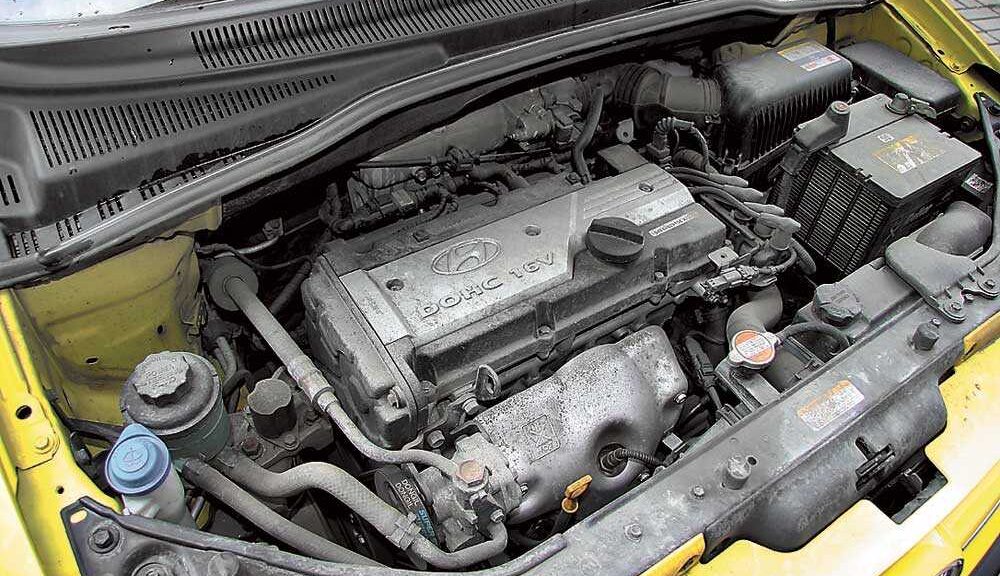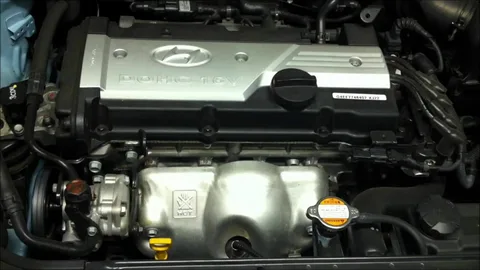
The Essential Guide to Isuzu D-Max Clock Spring
Welcome to our essential guide to the Isuzu D-Max Clock Spring! If you’re a proud owner of this versatile and reliable pickup truck, then you know just how important it is to maintain its various components. The clock spring, in particular, is a crucial part of your vehicle’s steering system that ensures smooth and safe handling. In this blog post, we’ll dive into everything you need to know about the Isuzu Clock Spring, from its function and common issues to maintenance tips and replacement options. So buckle up and get ready to learn all about this vital component of your Isuzu D-Max!
Understanding the Role of a Safety Clock Spring D-Max
The safety clock spring D-Max may not be the most glamorous component of your vehicle, but it plays a vital role in ensuring your safety on the road. So, what exactly does the safety clock spring do?
The safety clock spring is an integral part of your vehicle’s steering column. It acts as a crucial link between the steering wheel and various electrical components, such as the airbag, horn, and cruise control. Its main function is to allow for the continuous flow of electrical signals while the steering wheel is being turned.
When you turn your steering wheel, the safety clock spring unwinds or winds up, ensuring a continuous connection between the steering wheel controls and the electrical systems. This allows you to safely control various functions of your vehicle while keeping your hands on the wheel.
Without a functioning safety clock spring, these electrical systems would not work properly, jeopardizing your safety on the road. A faulty safety clock spring can lead to issues like a malfunctioning horn, non-deployment of the airbag during an accident, or failure of the cruise control system.
It’s important to understand the role of the safety clock spring in your Isuzu D-Max to ensure that you prioritize its maintenance and promptly address any issues. Regular inspections and proper care can help prolong the lifespan of this essential component and keep you safe while driving.
Common Problems and Symptoms Associated with a Faulty 4JJ1 Rocker Cover
The Isuzu D-Max is known for its reliability and durability, but even the toughest vehicles can experience issues from time to time. One common problem that D-Max owners may encounter is a faulty 4JJ1 rocker cover. This component is responsible for protecting the rocker arms and valves in the engine, and when it malfunctions, it can lead to various problems.
One of the most common symptoms of a faulty rocker cover is oil leaks. If you notice oil pooling underneath your vehicle or a strong smell of burning oil, it’s likely that the rocker cover gasket has failed and needs to be replaced. Another symptom is engine misfires or a loss of power. This occurs when the rocker cover isn’t providing a proper seal, leading to a loss of compression and engine performance.
In addition to these issues, a faulty rocker cover can also result in increased oil consumption, excessive engine noise, and even engine damage if left unaddressed. It’s important to address these problems promptly to avoid further complications and potential costly repairs.
If you’re experiencing any of these symptoms, it’s recommended to have your vehicle inspected by a qualified mechanic who can diagnose the issue and determine if a replacement rocker cover is necessary. Regular maintenance and inspections can help prevent these problems and keep your Isuzu D-Max running smoothly.
How to Diagnose a Bad or Failing Isuzu Clock Spring?
Is your Isuzu D-Max experiencing electrical issues or problems with your steering wheel controls? It could be due to a bad or failing clock spring. Diagnosing a faulty clock spring is crucial to ensure the safety and functionality of your vehicle.
One of the most common signs of a bad clock spring is a malfunctioning horn. If your horn stops working or only works intermittently, it could indicate a problem with the clock spring. Another symptom is issues with your airbag system. If the airbag light on your dashboard is illuminated or if the airbag fails to deploy during an accident, it may be due to a faulty clock spring.
Problems with your cruise control can also be a sign of a bad clock spring. If your cruise control system is unresponsive or doesn’t maintain the set speed, it’s worth investigating the clock spring as a possible culprit.
To further diagnose a bad or failing clock spring, you can try turning your steering wheel while operating various functions such as the horn and cruise control. If these functions work intermittently or not at all while turning the wheel, it’s a strong indication that the clock spring needs attention.

Step-by-Step Guide on Replacing the Isuzu Clock Spring
Replacing the clock spring in your Isuzu D-Max may seem like a daunting task, but with the right tools and a step-by-step guide, you can do it yourself. Here’s a comprehensive guide on how to replace the Isuzu clock spring:
- Start by disconnecting the battery: Before you begin, ensure that your vehicle is turned off and the battery is disconnected to prevent any electrical mishaps.
- Remove the steering wheel: Use a steering wheel puller to safely remove the steering wheel from the steering column. This will allow you access to the clock spring.
- Disconnect the clock spring: Once the steering wheel is removed, locate the clock spring behind the steering wheel. Carefully disconnect any electrical connections and remove any screws or bolts holding the clock spring in place.
- Install the new clock spring: Take your new clock spring and carefully place it in the same position as the old one. Ensure that all electrical connections are properly aligned and secured.
- Reassemble the steering wheel: Reattach the steering wheel to the steering column using the steering wheel puller. Make sure it is securely in place.
- Reconnect the battery: Once everything is reassembled, reconnect the battery and test the functions of the clock spring, such as the horn, airbag, and cruise control.
Maintenance Tips for Your Isuzu Clock Spring
Maintaining your Isuzu clock spring is essential to ensure its longevity and prevent any potential issues down the line. Here are some maintenance tips to keep your clock spring in top shape:
- Regular Inspections: It’s important to visually inspect your clock spring periodically. Look for any signs of damage, such as frayed wires or loose connections. If you notice any issues, it’s crucial to address them promptly to avoid further damage.
- Keep it Clean: Dirt, debris, and dust can accumulate on the clock spring over time, affecting its performance. Use a soft brush or compressed air to gently clean the clock spring and remove any buildup. Avoid using harsh chemicals or abrasive materials that could damage the electrical connections.
- Handle with Care: When working near the clock spring or removing the steering wheel, be careful not to damage or strain the wires. Always follow the manufacturer’s instructions and take your time to avoid any unnecessary mishaps.
- Avoid Extreme Temperatures: Extreme heat or cold can affect the performance and lifespan of your clock spring. Whenever possible, park your vehicle in a covered area or a garage to protect it from extreme temperatures.
- Regular Servicing: Include the clock spring in your regular servicing schedule. Have a qualified mechanic inspect and test the clock spring to ensure it is functioning properly. This can help catch any potential issues early on and prevent any major failures.
Tips for Ensuring Longevity of Your Isuzu Clock Spring
Maintaining the longevity of your Isuzu clock spring is essential to ensure its optimal performance and avoid any potential issues in the future. Here are some helpful tips to help you keep your clock spring in top shape:
- Regular Inspections: Make it a habit to visually inspect your clock spring periodically. Look for any signs of damage, such as frayed wires or loose connections. If you notice any issues, it’s important to address them promptly to prevent further damage.
- Keep it Clean: Dirt, debris, and dust can accumulate on the clock spring over time, impacting its performance. Use a soft brush or compressed air to gently clean the clock spring and remove any buildup. Avoid using harsh chemicals or abrasive materials that could damage the electrical connections.
- Handle with Care: When working near the clock spring or removing the steering wheel, be cautious not to damage or strain the wires. Always follow the manufacturer’s instructions and take your time to avoid any unnecessary mishaps.
- Avoid Extreme Temperatures: Extreme heat or cold can affect the performance and lifespan of your clock spring. Whenever possible, park your vehicle in a covered area or a garage to protect it from extreme temperatures.
- Regular Servicing: Include the clock spring in your regular servicing schedule. Have a qualified mechanic inspect and test the clock spring to ensure it is functioning properly. This can help identify any potential issues early on and prevent major failures.
By following these tips, you can help extend the lifespan of your Isuzu clock spring and ensure that it continues to perform its crucial role in your vehicle’s electrical systems. A well-maintained clock spring is essential for the safe operation of your Isuzu D-Max.
FAQS
Got questions about your Isuzu clock spring? Don’t worry, we’ve got you covered! Here are some frequently asked questions about the Isuzu clock spring:
Q: What is a clock spring?
A: The clock spring is a crucial component in your Isuzu D-Max that allows for the continuous flow of electrical signals while the steering wheel is being turned. It connects the steering wheel controls to various electrical systems like the airbag, horn, and cruise control.
Q: How do I know if my clock spring is faulty?
A: There are several signs that indicate a bad or failing clock spring. These include a malfunctioning horn, issues with the airbag system, and problems with the cruise control. Additionally, if you notice that these functions work intermittently or not at all while turning the steering wheel, it’s likely that the clock spring is the culprit.
Q: Can I replace the clock spring myself?
A: While it is possible to replace the clock spring yourself, it is recommended to seek the help of a professional mechanic or technician. They have the expertise and specialized tools to ensure that the replacement is done correctly and safely.
Q: How can I maintain my clock spring?
A: Regular inspections, keeping it clean from dirt and debris, handling it with care, avoiding extreme temperatures, and including it in your regular servicing schedule are all important for maintaining the longevity of your clock spring.
Conclusion
In this comprehensive guide, we have explored the Isuzu clock spring in great detail. From understanding its role as a vital component in your vehicle’s steering column to diagnosing common issues and providing step-by-step instructions for replacement, we’ve covered it all. If you encounter any problems with your Isuzu clock spring, it is always recommended to seek the assistance of a qualified mechanic or technician. They have the expertise and specialized tools to accurately diagnose and replace the clock spring if necessary.
One thought on “The Essential Guide to Isuzu D-Max Clock Spring”
It’s awesome to pay a visit this web page and reading the views of all friends about this paragraph, while I am
also eager of getting knowledge.